Picture this: a dimly lit room, the pulsating beat of music filling the air, and at the center of it all, a DJ skillfully manipulating vinyl records on turntables.
For decades, this scene defined the essence of DJing. But in today’s digital age, is a personal turntable DJ still a necessity, or has technology rendered this traditional art form obsolete?
The truth is, the world of DJing has undergone a dramatic transformation, with digital controllers and software challenging the dominance of vinyl and turntables.
However, the choice between traditional and modern approaches isn’t always clear-cut. Each method has its unique strengths and applications, catering to different events, audiences, and artistic visions.
Let’s dive into the evolving landscape of DJing, exploring the pros and cons of turntable DJs versus digital alternatives, and uncover when and why you might still want to opt for the classic vinyl experience.
Is It Required to Have a Personal Turntable DJ?
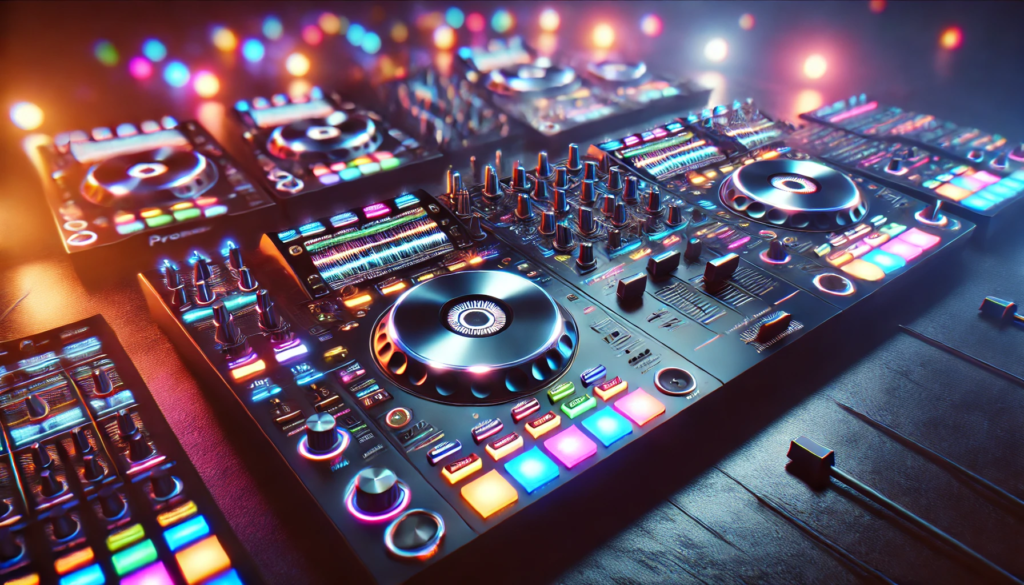
In most cases, it is not strictly required to have a personal turntable DJ. The necessity depends on various factors such as the type of event, budget, desired atmosphere, and personal preferences.
While turntable DJs can add unique value through live mixing and authentic vinyl sound, there are many alternatives available today, including digital DJing options and pre-mixed playlists.
For casual events or personal use, a turntable DJ is often not necessary. However, for certain scenarios like large events, weddings, nightclubs, or venues catering to vinyl enthusiasts, a skilled turntable DJ can significantly enhance the experience.
In the following sections, we’ll delve deeper into the pros and cons of turntable DJs versus digital alternatives, helping you make an informed decision for your specific needs.
The Evolving Landscape Of DJing
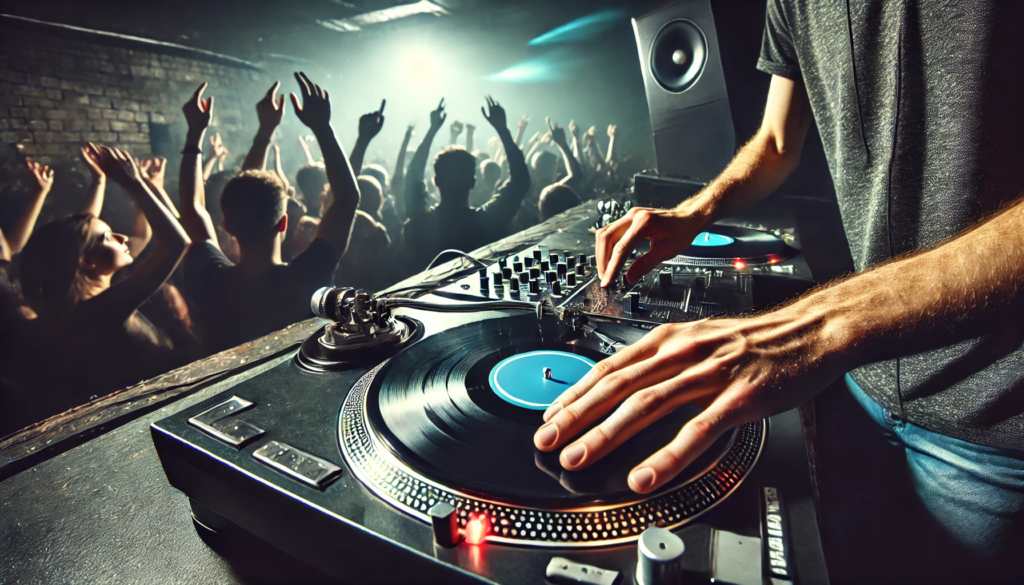
The world of DJing has undergone a remarkable transformation in recent years, reshaping the way we think about music performance and event entertainment.
The traditional image of a DJ meticulously curating vinyl records and skillfully manipulating turntables has given way to a more diverse and technologically advanced landscape.
This shift is not merely a change in equipment or technique; it represents a fundamental evolution in the art and profession of DJing.
At the heart of this transformation lies the rapid advancement of digital technology. The digitization of music has had a profound impact on how DJs source, organize, and perform their music.
Where once a DJ’s library consisted of crates filled with vinyl records, today’s DJ can carry an entire music collection on a small hard drive or even access vast online libraries through streaming services.
This shift has not only changed the physical aspect of DJing but has also expanded the possibilities for music selection and mixing.
The rise of digital music formats has been accompanied by the development of innovative DJ equipment designed to bridge the gap between traditional techniques and modern technology.
These advancements have made it easier than ever for aspiring DJs to enter the field, lowering the barriers to entry that once existed due to the cost and complexity of traditional setups.
At the same time, established professionals have found new ways to expand their capabilities, incorporating digital tools alongside traditional techniques to create unique and engaging performances.
As a result of these changes, the necessity for a dedicated turntable DJ has diminished in many contexts.
Events that once required the specialized skills of a vinyl-only DJ can now be serviced by performers using a variety of equipment and techniques.
This shift has led to a democratization of DJing, with more people than ever able to try their hand at mixing music and performing for audiences.
However, this evolution doesn’t mean that traditional turntable skills have become obsolete. Instead, the DJ world has expanded to encompass a wide range of styles and approaches, from purely digital setups to hybrid systems that combine elements of both old and new technologies. This diversity has enriched the DJ scene, offering performers and audiences alike a broader palette of musical experiences to choose from.
The changing landscape of DJing has also been influenced by shifts in music consumption habits. As listeners have become accustomed to the immediate gratification of digital streaming services, their expectations for live music experiences have evolved as well.
Modern audiences often expect DJs to be able to accommodate requests quickly, seamlessly blend between genres, and incorporate visual elements into their performances – all tasks that are facilitated by digital technology.
Despite these changes, the fundamental role of the DJ remains the same: to create an engaging musical journey for their audience. Whether using turntables, controllers, or a combination of both, successful DJs must still possess a deep knowledge of music, an ability to read and respond to the crowd, and the technical skills to mix tracks seamlessly.
The tools may have changed, but the art of DJing continues to thrive in this new, more diverse landscape.
DJ Controllers: The Modern Alternative To Turntables
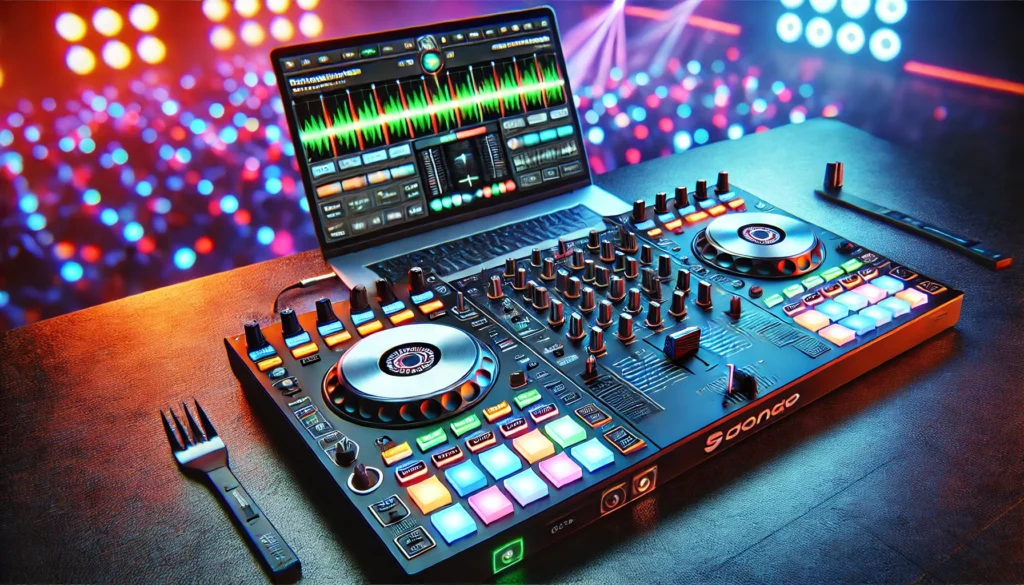
The introduction of DJ controllers has been one of the most significant developments in the evolution of DJing. These compact, versatile devices have revolutionized the way DJs approach their craft, offering a powerful alternative to traditional turntable setups. DJ controllers represent a convergence of digital technology and traditional DJing techniques, providing performers with unprecedented levels of control and creativity.
At their core, DJ controllers are all-in-one units that integrate various DJing functions into a single device. They typically connect to a computer running specialized DJ software, creating a seamless interface between the digital music files and the physical controls.
This integration allows DJs to manipulate and mix digital tracks with a level of precision and flexibility that was previously difficult to achieve with analog equipment.
Most DJ controllers are designed to mimic the layout and functionality of traditional DJ setups. They often feature jog wheels that replicate the feel and response of vinyl turntables, allowing DJs to scratch, cue, and adjust tracks in a familiar way.
Alongside these jog wheels, controllers boast an array of buttons, knobs, and faders that provide quick access to a wide range of mixing and effects options. This familiar layout helps DJs transition from traditional setups to digital systems, preserving many of the tactile elements that are central to the art of DJing.
The software component of a DJ controller setup is equally important. Modern DJ software offers a wealth of features that expand the creative possibilities for performers.
These programs allow DJs to set multiple cue points within tracks, create and trigger loops on the fly, and apply a vast array of digital effects. Many software packages also include advanced features like beat detection and key matching, which can help DJs create smoother mixes and more harmonious track transitions.
One of the most revolutionary aspects of DJ controllers is their ability to interface with vast digital music libraries. DJs can now carry their entire collection on a single laptop or even access tracks directly from online streaming platforms.
This capability has transformed the way DJs prepare for and perform their sets. Instead of being limited to the physical records they can carry, DJs now have instant access to virtually any track they might need.
This flexibility allows for more spontaneous and responsive performances, as DJs can quickly adapt their sets based on crowd reactions or unexpected requests.
The compact nature of DJ controllers has also had a significant impact on the profession. Traditional turntable setups, with their separate turntables, mixer, and often additional effects units, could be bulky and challenging to transport. In contrast, most DJ controllers are designed with portability in mind.
Many can fit into a backpack along with a laptop, making it much easier for DJs to travel between gigs or perform in venues with limited space. This portability has opened up new opportunities for mobile DJs and has made it easier for performers to take on a wider variety of gigs.
Despite their many advantages, it’s important to note that DJ controllers are not without their critics.
Some purists argue that the ease of use and digital assistance provided by controllers can lead to a homogenization of DJ performances, with less emphasis placed on the technical skills and music knowledge that were once essential.
However, proponents of controllers counter that these tools simply allow DJs to focus more on creativity and crowd interaction, rather than the physical mechanics of mixing.
As DJ controllers have evolved, they’ve become increasingly sophisticated, with high-end models offering features that rival or surpass those of professional club installations.
Some controllers now include built-in screens that display waveforms and track information, reducing the need for DJs to look at their computer screens.
Others offer advanced audio interfaces with multiple inputs and outputs, allowing for complex routing and the integration of external instruments or effects units.
The rise of DJ controllers has also led to changes in the way DJs approach their craft. With the ability to prepare and save playlists, set cue points, and create loops in advance, many DJs now spend significant time preparing their sets before a performance.
This pre-planning can lead to more polished and intricate mixes, but it also raises questions about the balance between preparation and spontaneity in DJ performances.
The Persistence Of Turntable DJing
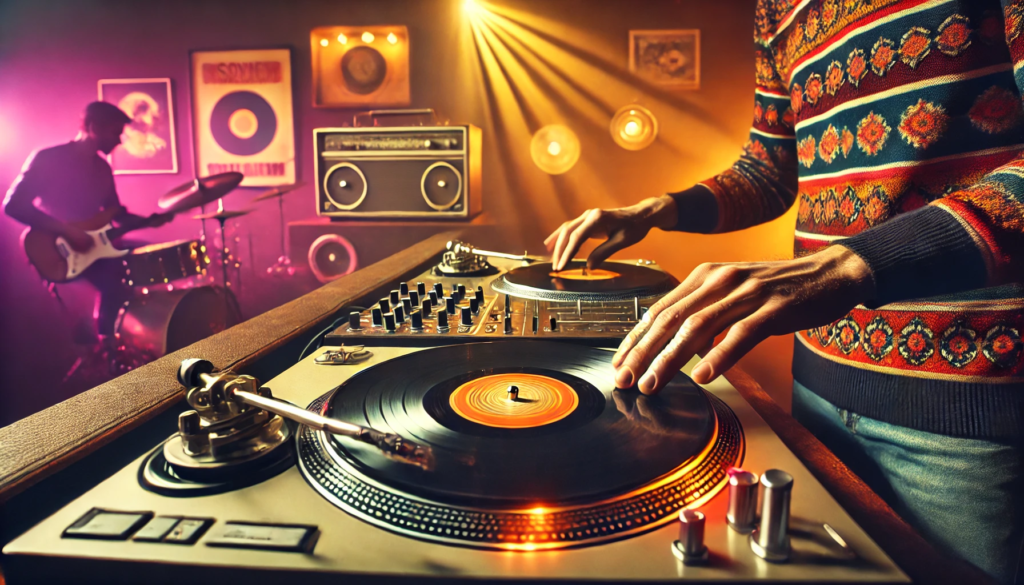
Despite the widespread adoption of digital technologies and DJ controllers, turntable DJing continues to hold a significant place in DJ culture.
This persistence is not merely a matter of nostalgia or resistance to change; rather, it reflects a deep appreciation for the unique qualities and challenges that turntable DJing presents.
The art of manipulating vinyl records on turntables remains an important part of DJ heritage and continues to influence contemporary mixing techniques.
One of the primary reasons for the enduring appeal of turntable DJing is its connection to the roots of DJ culture.
The technique of mixing records on turntables dates back to the early days of hip-hop and disco in the 1970s, when pioneering DJs like Kool Herc, Grandmaster Flash, and Afrika Bambaataa first began experimenting with extending breaks and blending tracks.
This rich history imbues turntable DJing with a sense of authenticity and cultural significance that many DJs and music enthusiasts deeply value.
The physical nature of vinyl mixing is another factor that contributes to its ongoing popularity. Turntable DJing requires a high degree of manual dexterity and timing. DJs must physically cue up records, adjust pitch controls to beatmatch tracks, and use techniques like nudging and dragging to keep beats aligned.
This hands-on approach creates a direct, tactile connection between the DJ and the music, which many performers find deeply satisfying.
The visual spectacle of a DJ skillfully manipulating records can also add an extra dimension to the performance, engaging the audience in a way that more subtle digital techniques might not.
Many DJs and listeners argue that vinyl records provide a unique sound quality that digital formats struggle to replicate.
The analog nature of vinyl can impart a warmth and depth to the music that some find more appealing than the clarity of digital audio.
Additionally, the imperfections inherent in vinyl playback – such as the subtle crackle of surface noise or the slight wow and flutter of a rotating platter – can add character to a mix, creating a more organic and “live” feel.
The limitations of vinyl mixing can also be seen as a creative advantage. With a finite number of records to work with and without the ability to rely on software for beat matching or effects, turntable DJs must be intimately familiar with their music and highly skilled in their mixing techniques.
These constraints can lead to more thoughtful track selection and creative mixing solutions, pushing DJs to develop a deep understanding of their music and hone their technical skills.
Turntable DJing also continues to be the standard in certain music genres and scenes. In hip-hop, for example, turntablism – the use of turntables as musical instruments – remains an essential element of the culture.
Scratch DJs continue to push the boundaries of what’s possible with vinyl manipulation, creating intricate rhythms and textures that are difficult to replicate with digital tools.
Similarly, in some electronic music scenes, particularly those with a strong connection to dance music history, vinyl DJing is still highly valued and sometimes even expected.
The resurgence of vinyl as a consumer format in recent years has also contributed to the ongoing relevance of turntable DJing.
As more music becomes available on vinyl, including new releases and reissues of classic albums, DJs have access to a growing pool of high-quality records to incorporate into their sets.
This trend has helped to keep vinyl mixing viable and relevant in contemporary DJ culture.
Many established DJs who came up in the pre-digital era continue to prefer turntables, either exclusively or as part of hybrid setups.
These veterans often cite the importance of preserving traditional DJ skills and the unique character that vinyl brings to a performance.
Their influence helps to maintain the prestige and relevance of turntable skills within the DJ community.
It’s worth noting that the persistence of turntable DJing doesn’t necessarily mean a rejection of digital technologies.
Many DJs who primarily use turntables also incorporate digital tools into their setups, such as DVS (Digital Vinyl Systems) that allow them to play digital files using special timecode vinyl.
This hybrid approach allows DJs to maintain the feel and technique of vinyl mixing while benefiting from the convenience and expanded library options of digital formats.
The ongoing popularity of turntable DJing has also led to continued innovation in turntable technology.
Manufacturers continue to produce high-quality turntables designed specifically for DJ use, with features like high-torque motors, pitch control, and reverse play capabilities.
Some modern turntables even incorporate digital features, blurring the line between analog and digital DJing.
When Turntable DJs Might Still Be Preferable
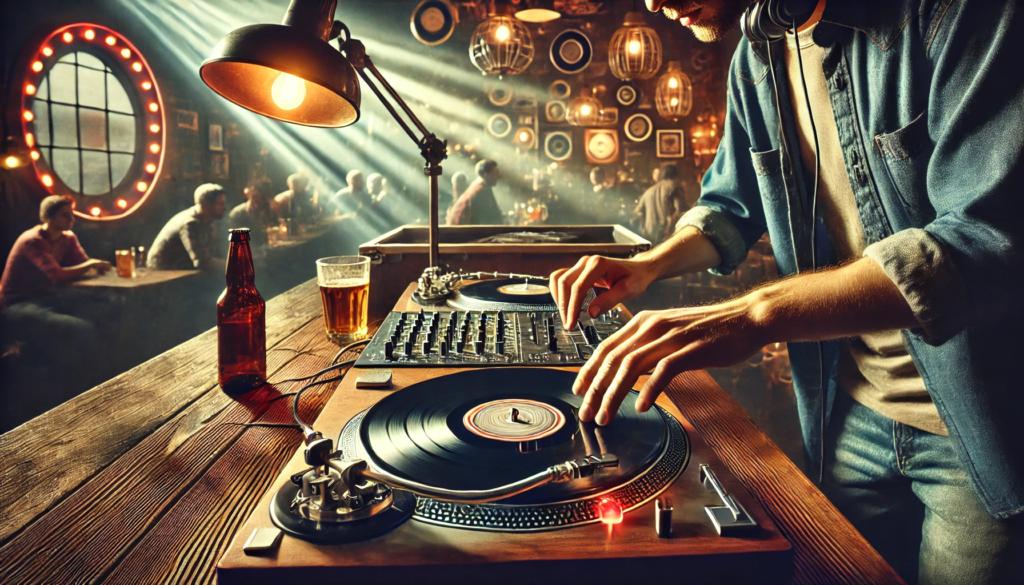
While DJ controllers and digital setups have become increasingly prevalent, there are still many scenarios where a traditional turntable DJ might be the preferred or even required choice.
These situations often arise from a combination of factors including the specific nature of the event, the preferences of the audience, and the desire to create a particular atmosphere or experience.
One of the most common contexts where turntable DJs remain in high demand is within certain music genres and scenes that have strong historical ties to vinyl culture. Hip-hop, for instance, has deep roots in turntablism, with techniques like scratching and beat juggling being integral to the genre’s development
In hip-hop events, battles, and competitions, the ability to manipulate vinyl records skillfully is often seen as a mark of authenticity and skill.
Audiences and fellow artists in these scenes may expect or prefer to see a DJ working with actual vinyl, viewing it as a more genuine representation of the culture.
Similarly, in certain electronic music subgenres, particularly those with strong connections to dance music history like house, techno, and disco, there’s often a preference for vinyl DJs.
This preference stems from both the historical significance of vinyl in these genres and the belief that vinyl provides a warmer, more authentic sound.
In underground club scenes and at events catering to audiophiles or music purists, a turntable DJ might be specifically sought out to maintain this sense of authenticity and connection to the roots of the music.
Specialized music events focused on vinyl culture are another area where turntable DJs are not just preferred but often required.
Record fairs, vinyl-only club nights, and events celebrating specific eras of music (like 70s disco or 90s rave) often feature DJs playing exclusively on turntables.
These events cater to vinyl enthusiasts and collectors who appreciate the physicality and nostalgia associated with record playing.
The visual aspect of turntable DJing can make it preferable in settings where the DJ’s performance is meant to be a focal point of the event.
The spectacle of a skilled DJ physically manipulating records, cueing up tracks, and performing tricks like scratching can be much more visually engaging than a DJ working primarily with a laptop or controller.
This visual appeal makes turntable DJs popular choices for events where the audience is likely to be watching the DJ closely, such as at showcase events, in certain club layouts, or at parties where the DJ booth is prominently positioned.
In venues with a specific aesthetic or theme, particularly those going for a retro or vintage atmosphere, a turntable DJ can contribute significantly to the overall ambiance.
The presence of vinyl records and turntables can serve as both functional equipment and decor, adding to the visual theme of the space.
This makes turntable DJs popular choices for events at vintage-styled bars, retro-themed parties, or venues that want to evoke a particular era through their music presentation.
Some high-end clubs and music venues maintain turntable setups as a point of pride and to cater to DJs who prefer or specialize in vinyl mixing.
These venues often attract audiences who appreciate the skill and authenticity associated with turntable DJing. In such settings, the presence of a turntable DJ can be seen as a mark of quality and commitment to the art form of DJing.
Private events and weddings can also be contexts where turntable DJs are specifically requested. Some clients may have a personal connection to vinyl records or a preference for the aesthetic and sound of turntable DJing.
In these cases, the choice of a turntable DJ can add a unique and personalized touch to the event.
Educational settings present another scenario where turntable DJs might be preferable. DJ schools and music production courses often include vinyl mixing as part of their curriculum, recognizing the importance of understanding the roots of DJing and the fundamental skills involved in beatmatching and mixing without digital assistance.
In these contexts, instructors who are skilled in turntable techniques are essential.
It’s worth noting that in many of these scenarios, the preference for a turntable DJ doesn’t necessarily preclude the use of all digital technology.
Many DJs who are proficient with turntables also incorporate digital tools into their setups, such as mixers with effects processors or laptops running additional software.
The key is that the primary mode of track selection and mixing is done using physical records and turntables.
The choice to use a turntable DJ can also be influenced by the specific skills and reputation of individual DJs.
Some DJs have built their careers and reputations around their vinyl mixing skills, and event organizers may seek them out specifically for this expertise.
In these cases, the preference is less about the equipment itself and more about the unique style and skills of the particular DJ.
The Best Of Both Worlds: Hybrid Setups
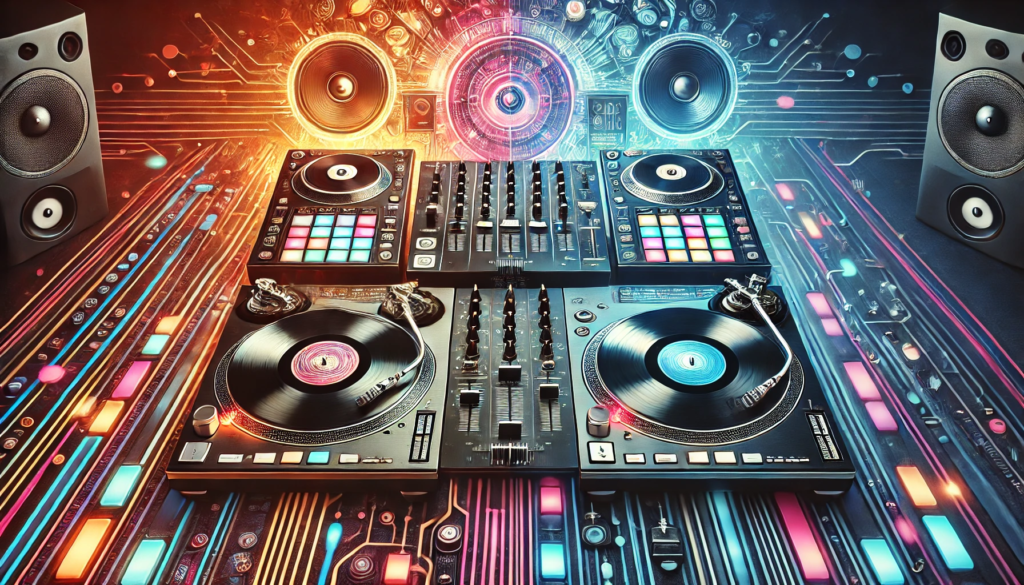
As the DJ industry continues to evolve, many performers are finding that the most effective approach is to combine elements of both traditional turntable setups and modern digital systems.
These hybrid setups allow DJs to leverage the strengths of each technology, creating versatile and powerful performance rigs that can adapt to a wide range of situations and musical styles.
One common form of hybrid setup involves using turntables in conjunction with a digital vinyl system (DVS). This configuration allows DJs to use special timecode vinyl records that send signals to a computer running DJ software.
The software then plays digital audio files in response to the movement of the record. This setup preserves the tactile feel and technique of vinyl mixing while giving DJs access to vast digital music libraries. It’s an ideal solution for DJs
who want to maintain their turntable skills while benefiting from the convenience and expanded options of digital music formats.
Another popular hybrid approach involves using a traditional turntable setup alongside a DJ controller or CDJs (professional-grade CD players designed for DJing). This configuration allows DJs to seamlessly mix between vinyl records and digital tracks, offering the best of both worlds.
They can play rare or classic tracks on vinyl, taking advantage of the unique sound quality and authenticity of the format, while also having quick access to a broader range of music through their digital system.
Some DJs opt for a setup that includes one turntable and one digital deck. This arrangement allows for creative mixing between analog and digital sources, providing flexibility in music selection while maintaining the option to play physical records.
It’s a compact solution that can be particularly useful for mobile DJs who need to be prepared for various gig scenarios.
The mixer plays a crucial role in many hybrid setups. Modern DJ mixers often include built-in audio interfaces and can seamlessly integrate both analog and digital inputs.
Some high-end mixers even include onboard effects processors and the ability to connect directly to laptops running DJ software, further blurring the line between analog and digital DJing.
For DJs who primarily use digital systems but want to incorporate some elements of vinyl manipulation, there are controller options that closely mimic the feel and response of turntables.
These high-end controllers often feature motorized platters that provide the resistance and tactile feedback of vinyl, allowing DJs to scratch and manipulate digital files in a way that closely resembles working with physical records.
The software used in hybrid setups has also evolved to accommodate this blending of analog and digital techniques. Many DJ software packages now offer advanced vinyl emulation modes, allowing DJs to apply classic vinyl techniques to digital files.
These programs can even simulate the subtle imperfections of vinyl playback, adding warmth and character to digital tracks.
One of the key advantages of hybrid setups is their adaptability. DJs can tailor their rig to suit different types of gigs, venues, or musical styles. For instance, a DJ might use a fully digital setup for a mobile gig where portability is key, but switch to a hybrid or all-vinyl setup for a club residency or specialist event.
Hybrid setups also allow DJs to take advantage of the unique strengths of each format. Vinyl records can provide a warm, rich sound that many find preferable for certain types of music, particularly in genres with strong ties to vinyl culture.
Digital systems, on the other hand, offer precise control over track playback, the ability to quickly search vast music libraries, and access to advanced features like looping, effects, and instant track analysis.
The use of hybrid setups has led to new creative possibilities in DJing. For example, a DJ might use the steady, quantized beat of a digital track as a foundation, while layering over it with more organic, groove-based vinyl tracks.
Or they might use digital technology to extend and manipulate vinyl sources in ways that wouldn’t be possible with a purely analog setup.
For many DJs, a hybrid setup represents a bridge between the past and future of their craft. It allows them to honor the history and techniques of traditional DJing while embracing the innovations and possibilities offered by new technology.
This approach can be particularly appealing to DJs who came up in the vinyl era but want to stay current with modern trends and techniques.
The flexibility of hybrid setups also makes them valuable in educational settings. DJ schools and music production courses can use these rigs to teach both traditional and modern techniques, giving students a well-rounded skill set that prepares them for a variety of performance scenarios.
However, it’s worth noting that hybrid setups can be more complex and potentially more prone to technical issues than either purely analog or purely digital systems.
DJs using hybrid rigs need to be proficient in troubleshooting both analog and digital equipment and must be prepared to deal with potential compatibility issues between different components of their setup.
The cost can also be a consideration, as building a comprehensive hybrid setup often involves investing in both high-quality analog equipment and advanced digital systems.
However, many DJs find that this investment pays off in terms of versatility and the ability to adapt to different performance situations.
As technology continues to advance, we’re likely to see even more innovative hybrid solutions emerging. Manufacturers are constantly working on new ways to bridge the gap between analog and digital DJing, creating products that offer the best aspects of both worlds.
The Future Of DJing: Balancing Tradition And Technology
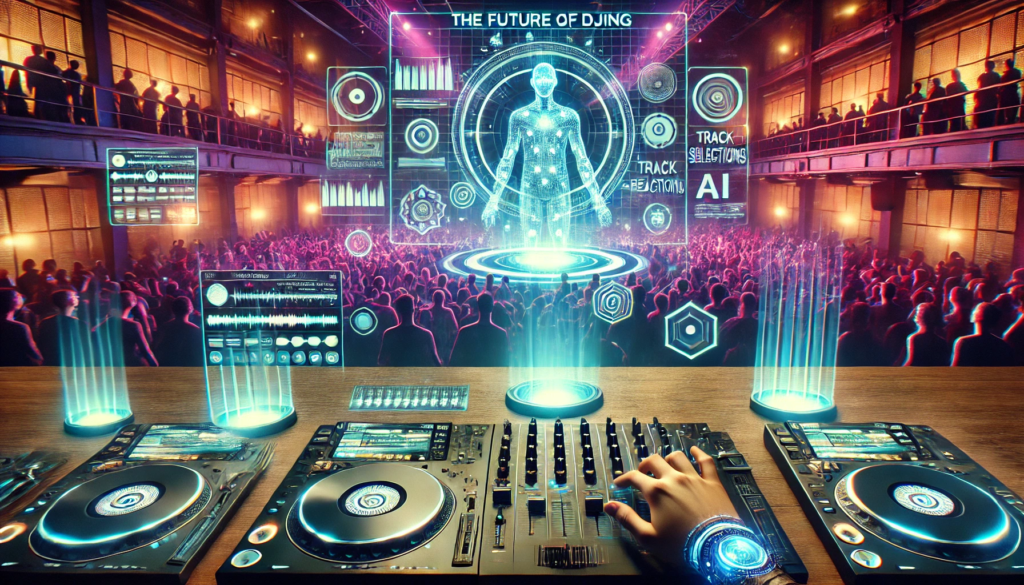
As we look towards the future of DJing, it’s clear that the industry will continue to evolve at a rapid pace, driven by technological innovations and changing musical landscapes. However, this evolution is unlikely to be a simple linear progression from analog to digital.
Instead, the future of DJing will likely be characterized by a nuanced balance between honoring traditional techniques and embracing cutting-edge technologies.
One of the most significant trends shaping the future of DJing is the increasing integration of artificial intelligence and machine learning technologies.
AI-powered DJ software is becoming more sophisticated, capable of analyzing crowd reactions and adjusting music selection in real-time.
These systems are getting better at mimicking the decision-making processes of human DJs, from beatmatching and harmonic mixing to reading the energy of a crowd and selecting appropriate tracks.
However, rather than replacing human DJs, these AI tools are more likely to become powerful assistants, augmenting the capabilities of skilled performers.
We may see DJs using AI to handle some of the more technical aspects of mixing, allowing them to focus more on track selection, crowd interaction, and the overall flow of their sets.
This could lead to more dynamic and responsive performances, with DJs able to quickly adapt to changing crowd dynamics.
Virtual and augmented reality technologies are also poised to make significant impacts on the world of DJing. VR DJ software allows users to mix music in immersive virtual environments, opening up new possibilities for remote performances and unique visual experiences.
Augmented reality, on the other hand, could transform the way DJs interact with their equipment, overlaying digital controls and information onto physical DJ gear.
The rise of cloud-based DJ platforms and streaming services specifically designed for DJs is another trend that’s likely to shape the future of the industry.
Services like Beatport LINK and SoundCloud GO+ allow DJs to access vast libraries of music directly from their DJ software, reducing the need for large personal music collections.
As these services continue to evolve, we may see a shift towards subscription-based models for DJ music access, similar to how consumers now stream music for personal listening.
Despite these technological advancements, there’s likely to be a continued appreciation for the skills and techniques associated with traditional DJing.
Many in the industry believe that the constraints and challenges of vinyl mixing foster creativity and musicality in ways that purely digital systems may not.
As a result, we’re likely to see ongoing efforts to preserve and celebrate these skills, perhaps through specialized events, competitions, or educational programs.
The equipment used by DJs is likely to continue evolving, with manufacturers finding new ways to blend analog and digital technologies.
We may see more hybrid devices that offer the tactile feel of vinyl manipulation while providing the flexibility of digital systems.
Touchscreen interfaces, gesture control, and even brain-computer interfaces could all play a role in shaping the DJ equipment of the future.
Sustainability is becoming an increasingly important consideration in the DJ industry. There’s growing interest in eco-friendly DJ equipment and practices, including the use of renewable energy sources for powering gear and the development of more energy-efficient hardware.
This trend is likely to continue, with manufacturers and DJs alike seeking ways to reduce the environmental impact of their activities.
The role of the DJ itself may continue to expand and evolve. Many DJs are already branching out into production, live performance, and other areas of the music industry.
In the future, we may see the lines between DJ, producer, and live electronic musician blur even further, with performers seamlessly switching between these roles during a single set.
The global nature of electronic music culture, combined with advancements in streaming technology, is likely to lead to more opportunities for remote and collaborative performances. We may see an increase in multi-location DJ sets, with performers in different parts of the world mixing together in real-time.
As music consumption habits continue to evolve, DJs may need to adapt to changing expectations from audiences. The instant gratification provided by streaming services and the algorithmic curation of personal playlists could influence how audiences engage with DJ performances.
DJs may need to find new ways to surprise and engage listeners who are used to having complete control over their music listening experience.
Education in DJing is also likely to evolve. While there will always be value in learning the fundamental skills of mixing and music selection, future DJ education may place increased emphasis on areas like music theory, production techniques, and even business and marketing skills.
Online learning platforms and VR-based training could make high-quality DJ education more accessible to aspiring performers around the world.
Despite all these changes, the fundamental role of the DJ as a curator and manipulator of music is likely to remain constant.
The specific tools and techniques may evolve, but the core skills of reading a crowd, understanding music deeply, and creating cohesive, engaging musical journeys will continue to be central to the art of DJing.
Conclusion
In conclusion, the question “Is it required to have a personal turntable DJ?” doesn’t have a simple yes or no answer.
The necessity of a turntable DJ depends on various factors, including the type of event, audience preferences, and desired atmosphere.
While DJ controllers and digital setups have revolutionized the industry, offering convenience and versatility, there’s still a place for traditional turntable DJing in certain contexts.
The future of DJing likely lies in a balance between honoring the art’s rich history and embracing technological innovations.
Whether you choose a turntable DJ, a controller setup, or a hybrid approach, the goal remains the same: to create an engaging and memorable musical experience for your audience.
As the industry continues to evolve, the most successful DJs will be those who can adapt to new technologies while maintaining the fundamental skills that have always defined great DJing.
